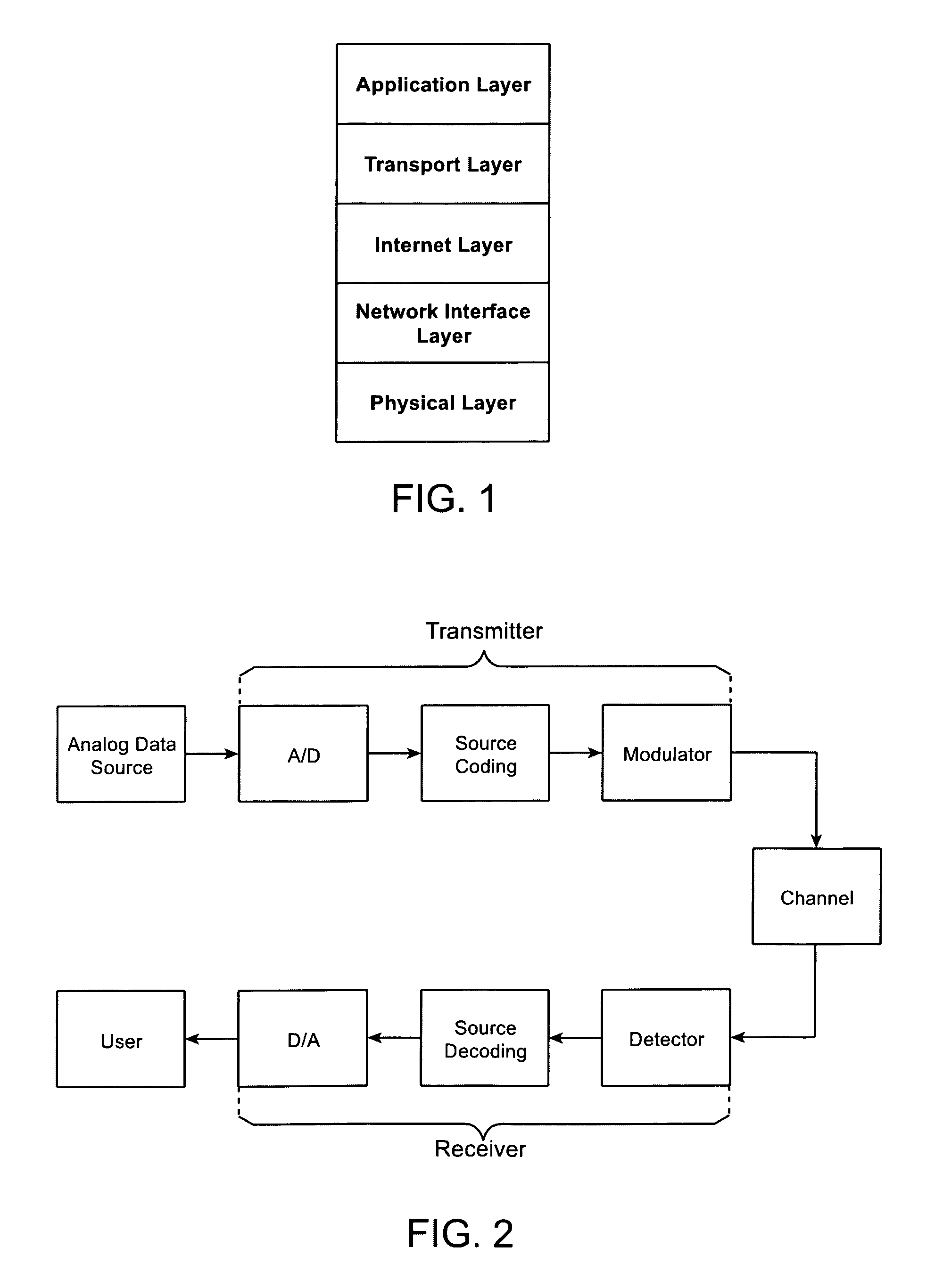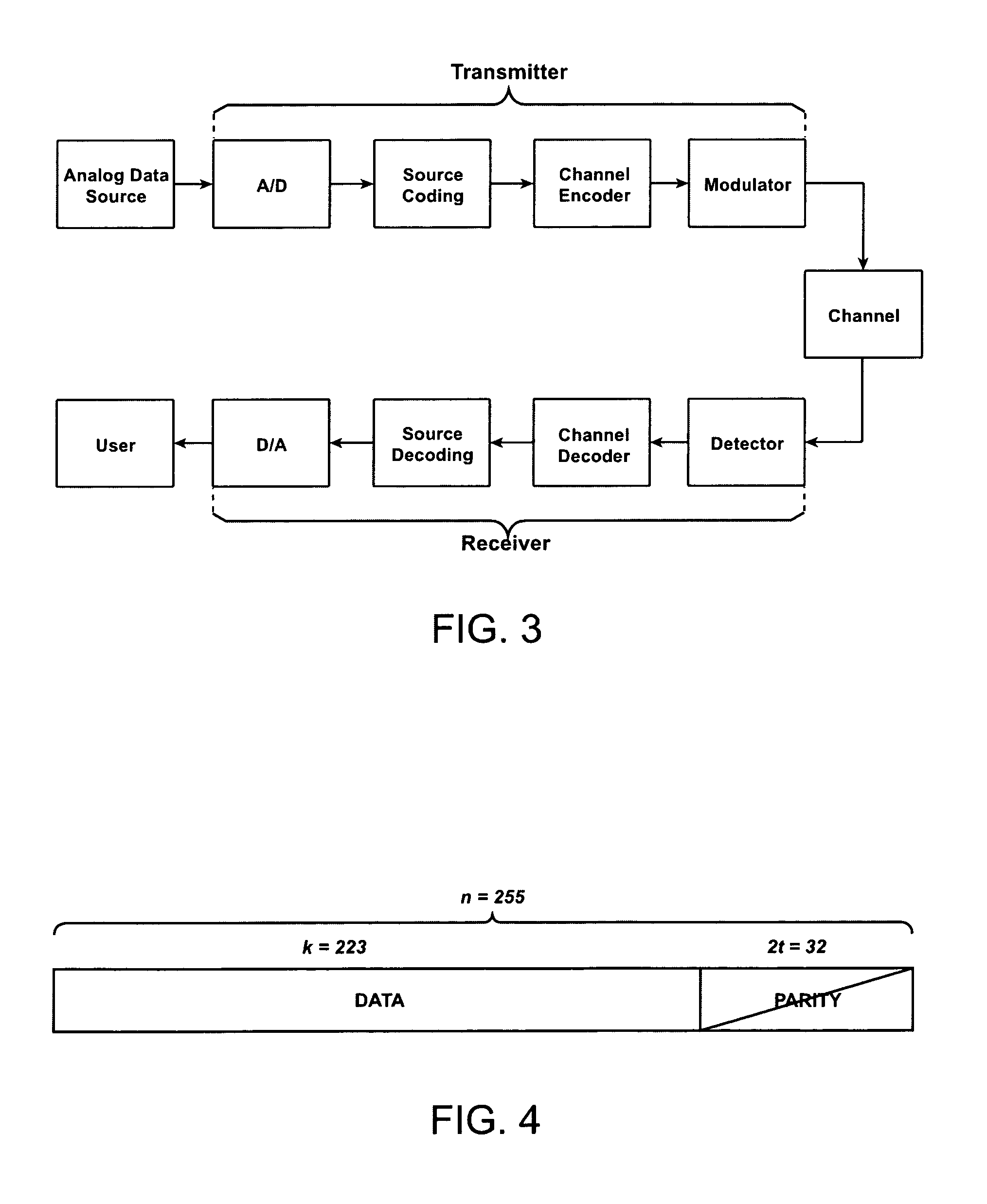Forward Error Correction (FEC) for packetized data networks
a packetized data network and forward error correction technology, applied in the field of voice over internet protocol (voip) network loss and recovery techniques, can solve the problems of unreliable connectionless data transmission service, introduce errors in the physical layers, and udp does not offer guaranteed delivery of datagrams to the other end, so as to improve the ability to accommodate the loss of voice packets
- Summary
- Abstract
- Description
- Claims
- Application Information
AI Technical Summary
Benefits of technology
Problems solved by technology
Method used
Image
Examples
Embodiment Construction
[0043]A method is disclosed for forward error correction for packets of information transmitted in a network. Numerous specific details are set forth in order to provide a thorough understanding of the present invention. It will be understood, however, to one skilled in the art, that the present invention may be practiced without some or all of these specific details.
Technical Background
[0044]To better understand the material covered in this invention the reader will need technical background in several fields. Data Communication including the protocols and methods used to transport voice over the Internet Protocol will be explained. The basics of Information Theory will be laid out briefly and Reed-Solomon codes in particular will be explained.
VoIP And The TCP / IP Protocol Stack
[0045]The TCP / IP stack of communication protocols is the most widespread data communication standards. The protocols, which include the Internet Protocol (IP), the Transmission Control Protocol (TCP), the Use...
PUM
 Login to View More
Login to View More Abstract
Description
Claims
Application Information
 Login to View More
Login to View More - R&D
- Intellectual Property
- Life Sciences
- Materials
- Tech Scout
- Unparalleled Data Quality
- Higher Quality Content
- 60% Fewer Hallucinations
Browse by: Latest US Patents, China's latest patents, Technical Efficacy Thesaurus, Application Domain, Technology Topic, Popular Technical Reports.
© 2025 PatSnap. All rights reserved.Legal|Privacy policy|Modern Slavery Act Transparency Statement|Sitemap|About US| Contact US: help@patsnap.com



